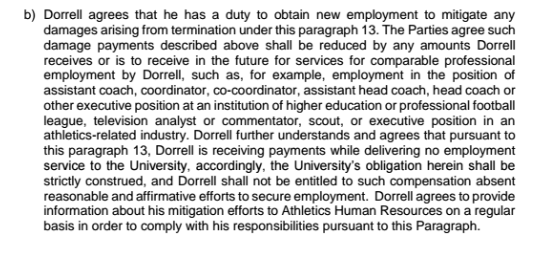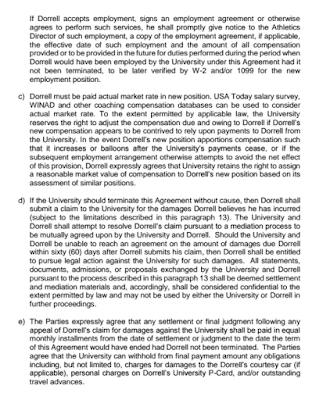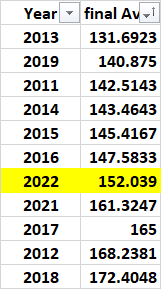"[...] Tennessee aside (#9 in KP last year), this may be the softest non-con schedule Tad has put together while at CU. No judgment, it's hard to build a schedule, and a 20-game P12 slate leads you in this direction, but yo. Utah-esque."
Normally, I'd have actually looked at some records and some stats before positing something like that. Today? No, not so much. That's my bad.
So, to make up for my error, I've cracked open the KenPom files and done some digging to try and actually understand this year's non-conference schedule, insofar as it compares to the rest of the Tad Boyle era.
The Context
CU released its 2022-23 non-conference basketball schedule at the start of the month; you can find it
here. Just today, the Pac-12
released their conference weekly pairings, giving us fans a near-complete picture of the schedule.
There are, to be completely straight, a dearth of "headline" programs in the non-conference portion. This season, Colorado will be playing UC Riverside, @ Grambling, @ Tennessee (Neutral), Yale, CSU, North Alabama, Northern Colorado, and Southern Utah in their non-con. This is in addition to three teams in their MTE, one of which will be UMass.
To be fair, three of those teams (Tennessee, Yale, and CSU) made the NCAA Tournament last March, with two others (Northern Colorado and Southern Utah) making lesser non-conference postseason appearances (CBI and CIT, respectively). Additionally, in the MTE, Colorado could see teams like Texas A&M and Boise St if the bracket falls the right way, who each were postseason entrants in March of 2022.
Still, at first blush, it's a soft schedule. Uninspiring, certainly. A group of directional detritus that I would otherwise needle a conference opponent for drawing up.
But, is it really the softest that Tad and his staff have drawn up while at Colorado?
Wait, what is an MTE?
MTEs, or Multi-Team-Events, allow coaches to add in a non-conference tournament or similar to supplement their schedules. Often taking place in far-flung exotic locales (like Hawai'i, Puerto Rico, or the Bahamas), they're exceedingly common place, and rare is the major program's schedule that doesn't include one (Colorado's last season without an MTE was 2013-14).
Normally, NCAA rules limit a college schedule to 29 regular season games (plus exhibitions, either public or private). However, by including a three-game MTE in your schedule, you can cram in a maximum of 31 games. It comes at a cost, though: you're at the mercy of the MTE for your opponents, the bracket, etc.
This year's example for Colorado is the Myrtle Beach Invitational (tickets on sale now!), which I will be attending in mid-November.
The Methodology
I thought the quickest and fairest way to quantify the difficulty of a given year's schedule was to average the *previous* year's final KenPom ranking of each team on the slate. i.e., if I was looking at the 2013-14 season's schedule, I would compare it against the final KP rankings from 2012-13.
Why did I do it that way? Why not look at pre-season rankings or final rankings from the year in question? Why not something more complicated with weighting and such?
Well, first, KP doesn't keep his old pre-season rankings in a handy format that I can find. I imagine that's because his pre-season rankings are the result of as much statistical guesswork and calculus as hard data, but I digress.
As to eschewing final rankings from the actual year of the schedule? Well, I'll concede it's a flawed method, particularly in a sport where many programs can turn over dramatically year-to-year. However, I feel it's the most reliable way to understand the context behind the schedule heading into each season, rather than trying to justify against the results. My purpose, after all, is to understand how this year's schedule can be viewed, not how it will. The *actual* difficulty of the current schedule is unknown, and won't be known until the end of December. I can't then compare that unknown against a known quantity, so I am trying and contextualize the 2022 numbers against something similar.
See, in any given season, there are breakout teams and disappointments that can have a dramatic effect on the final value of a schedule. Take last year's meeting with Milwaukee, for example. The Panthers, coming into the season, were viewed a dark horse candidate for an at-large berth in the NCAA Tournament. They were highly thought of, boasting some veteran components and an anticipated NBA lottery pick in Patrick Baldwin, Jr. Baldwin, however, never showed that presumed promise under his father's (Head Coach Pat Baldwin) tutelage, struggling with injuries (only played 11 games for Milwaukee) and poor performances throughout the year. Without expected returns from their star, the Panthers, 120th in the preseason KenPom ratings, finished a dreadful 335th nationally. In retrospect, that's a black hole on the schedule, a game that is a NET anchor. However, headed into last season, it was a game that was rightfully looked at as a potential NET booster.
This kind of goes back to why I disregard the notion that you can use March results to justify the regular season narrative -- you can't let the ends justify the means. Just because a schedule *turned out* to be difficult, doesn't mean that difficulty would've been appreciated in October. So, to filter out that noise, I looked back at the final results of the previous seasons -- that's the context under which the coaching staff would've built the calendar, so that's how I will judge it.
In the end, I decided to ignore home vs road or other weighting options. I could've added in a modifier, similar to how the RPI and the NET have accounted for home/road splits in the past, but... *sigh* I've got a day job, OK?
Next, I needed to consider the impact of the MTE. Going into the year, some of the games are fixed (CU knows they'll face UMass this season, for example), whereas others are the result of games played outside of CU's control. So, how to account for that? Well, I averaged out the entirety of the MTE, cognisant of any fixed games, but otherwise accounting for all teams that CU *could've* played. That gave me a KP "value" for the MTE. I then factored that into the rest of the schedule, slotting in that "value" by the maximum # of games that were to be played.
Finally: exclusions. I excluded the 2020-21 season, which was scheduled amidst the chaos of COVID, for obvious reasons. I also excluded any exhibitions or other non-D1 games played (New Orleans in 2011 is an example here). And, I also excluded Tad's first year, 2010, from the list because I didn't think it fair, given that he signed on in April, and, I would assume, many of the games had already been scheduled.
If, after all of that, you have problems with the methodology... OK? Hey, it's a free country, prove me wrong and do it yourself.
The Results
Well, long story short, I should've looked at the data, first, before saying something stupid -- let that be a lesson to all of you! While the 2022 non-conference schedule doesn't shape up to be the strongest of the Tad Boyle era, it certainly isn't the worst. See below:
Woof, 2018 was awful. That was a year bereft of any high-major teams in the non-conference slate. Other than CSU, the home headliner that year was... I guess Drake? Even the
MTE that year was a bust, with CU going 1-2 against a middling group of Indiana State, Hawai'i, and Charlotte. The less said of that the better.
2013, on the other hand, was interestingly the only year that CU didn't schedule a full MTE. Tad made up for that with a pair of high-profile neutral site one-off games -- Against Baylor in Dallas and Oklahoma State in Las Vegas -- which combined nicely with the home tilt against Kansas (Ski for 3) to beef up the numbers.
Ultimately, 2022 is pretty much middle-of-the-road. Lacking a home marquee event, sure, but otherwise on par with what we've seen, historically. It's also solidly *stronger* than last season's, thanks to a potentially hefty MTE which boasts a field deeper than any CU has played in since 2011.
So, to Tad and staff, I apologize and take back my complaint from earlier today.
A screencap of my full sheet can be found below, for those interested:
OK, but why?
Why did I do this? Well, to answer that itch in my brain that was telling me I hadn't shown my work.
Also, I wanted to better understand this year's schedule in context.
No, why is scheduling like this?
It's important to understand that, as opposed to football where the AD negotiates the schedule (often a decade-plus in advance of kickoff), the basketball schedule is largely set by the coaching staff within a calendar year of the game to be played. That makes it not only complicated and personal to the staff that's running the program -- it can make or break a season before it even gets started -- but a competitive rush against other like-minded programs to get games on the schedule.
In the end, a *lot* of behind-the-scenes work goes into putting together the games we get to watch each fall, work that is ultimately a thankless task. Too easy a schedule: the fans complain (*waves*) and ticket sales suffer. Too hard a schedule: the team takes its knocks and you end up with a worse record than you "should." You have to schedule for your roster, after all.
Then, there's other context to consider. First, there's a finals week in the middle of December; probably shouldn't be playing a high-leverage NET game that week, let alone traveling. Oh, and don't forget that the Pac-12 moved to a 20-game conference schedule a few years back. That means two conference games taking up space in your early-season calendar; games that you *really* should be winning. That means less incentive to schedule marquee dates that could coincide with a difficult road trip to, say, Washington (December 4th, btw).
What's more, there's an undeclared factor here: no teams worth a damn want to come to the CEC for a game. Unless Colorado gives up more than just a return trip (i.e., a 2-for-1, or a home-and-home plus a semi-road neutral, like with Tennessee), Top-40 programs won't answer the phone call. Hell, even smart programs in the 41-100 range wouldn't willingly come to the Foot of the Flatirons if they can avoid it. Why play at the 5th-toughest venue in the country if you don't have to? There are other places you can go to boost your NET where you might actually win.
That leaves the UC Riversides and North Alabamas of the world; those just looking for a "buy game", aka a paycheck (queue Rothstein and the epitome of brutality...). And so that's who ends up on the schedule. Throw in a few games dictated by existing contracts (CSU, @ Grambling, Tennessee), a few regional foes (Northern Colorado, Southern Utah), juggle the Pac-12 games and finals week and *poof*, there you go.








